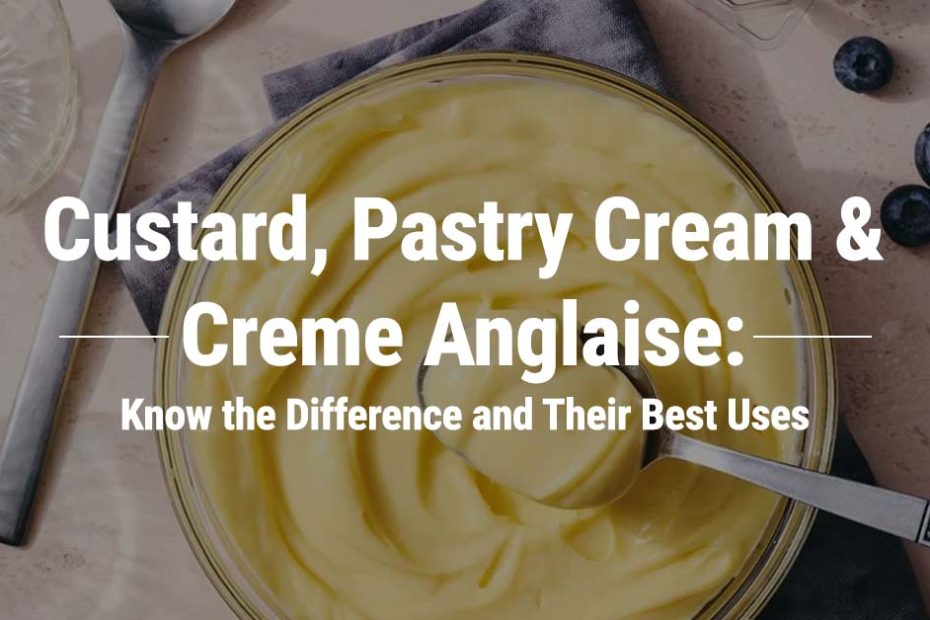Creamy, sumptuous and flexible to any extent—desserts made from custard forms the basis of the sweet art. However, the problem is that a large number of beginners throw together these three terms: custard, pastry cream and crème anglaise as if they were one and the similar, since the ingredients for all these are more or less the same. The secret is in different cooking ways, different texture and different usage of them in the recipes. Knowing these differences will take your desserts to the next level, particularly if you are gaining professional skills through a baking courses in Chennai.
We dissect these three masterpieces, so you have a clear idea and the reason for using each.
What Is Custard?
Essentially, custard can be seen as the basis. In fact, custard is a mixture of milk (or cream), eggs and sugar, which is mildly cooked to thicken. It has different forms: baked, stirred or even set with a crust.
Custard utilizes eggs as a source of thickening, no starch is used. The result is velvety, delicate and mildly sweet. Baked custards, such as caramel flan or crème brûlée, are firm due to the heat from the oven. Stirred custards are cooked slowly on the stovetop and therefore, remain loose and creamy.
A good custard is basically about the right temperature. If the temperature is too hot, the eggs will scramble, if it is too cold, the custard will not thicken.
Best Uses
- Simply as a dessert-crème brûlée, pots de crème
- As a foundational ingredient for various ice creams
- As a sweet filling in traditional fruit tarts (especially the softer ones)
Pastry Cream
Pastry cream (crème pâtissière) is essentially a custard with a firmer texture. What separates it from regular custard is the addition of starch such as cornstarch or flour. Due to this, pastry cream is cooked to a thicker consistency and is also more stable. It is very light and can be used for decorating or stuffed in pastries.
Pastry cream is prepared by heating milk with sugar, then mixing the hot milk with the mixture of egg yolks and starch and finally cooking it until it thickens. When it is refrigerated, the cream becomes smooth, compact and can be used straight away.
The main advantage of the cream is that bakers can always rely on the consistency. Pastry cream is also a very quick process and even a beginner will have no problem since starch prevents curdling and allows the cream to thicken very fast.
Best Uses
- Filling for éclairs, profiteroles & choux pastries
- Fruit tart bases
- Layered cakes
- Danish & brioche fillings
Pastry cream is a very attractive concept for many due to its indomitable nature and therefore variations such as chocolate, coffee, matcha and praline exist. Some professionals even add whipped cream to lighten it, thus giving diplomat cream, which is suitable for fragile pastries.
Crème Anglaise
Crème anglaise is definitely the most liquid one out of the three. It is a pourable, smooth custard made from milk, egg yolks and sugar, very much like custard but it is only cooked up to the point where it can coat a spoon. There is no starch added, so it can never be as thick as pastry cream.
Its mesh is very fine and silky, just right for a sauce. The temperature is the most important thing here, crème anglaise is removed from the heat when it reaches about 82–84°C. If it is any hotter, the mixture will separate.
For the reason that it is extremely light, crème anglaise is normally used to accompany other desserts.
Best Uses
- As a dessert sauce to be poured over
- As a base for ice creams
- Used with cakes, puddings or fruits
Their taste is very faint, vanilla being the most common, however, spices and citrus can turn it into a wonderful thing.
How They Differ
These three have the same base ingredients but their textures and uses are different.
- Custard: made with only eggs and can be either soft or set
- Pastry cream: made with eggs + starch, a firm cream that can be piped
- Crème anglaise: a lightly thickened sauce, can be poured
Knowing these distinctions will enable you to select the right one for the type of dessert you are going to make, a flowing sauce, a stable filling or a delicate dessert to eat with a spoon.
Which Should You Use?
It depends largely on the dish you are making. A tart needs a structured element, thus pastry cream would be the best choice. Do you need a sauce to go with a warm brownie? Then crème anglaise is what you need. If you want a dessert to serve by itself, then baked custard or crème brûlée would be just right.
After you understand the function of each one, you won’t consider them as different recipes anymore, but rather as different variations of the same skill.
Theory is supported by practice, as it is through the hands-on sessions that you acquire the skills of temperature control, timing and achieving the desired consistency, which are the main factors that make a difference in the case of eggs and dairy.
Custard, pastry cream and crème anglaise are three different things that might seem similar visually, but are very different in terms of their texture, thickness and use. Knowing each one gives you the ability to create sophisticated desserts of any kind, such as light choux buns or fancy sweets presented on a plate like in a restaurant. baking classes Anna Nagar at Zeroin Academy, led by an experts, take you through each step, enabling you to achieve perfection in these timeless recipes by using professional techniques which are forever with you.
